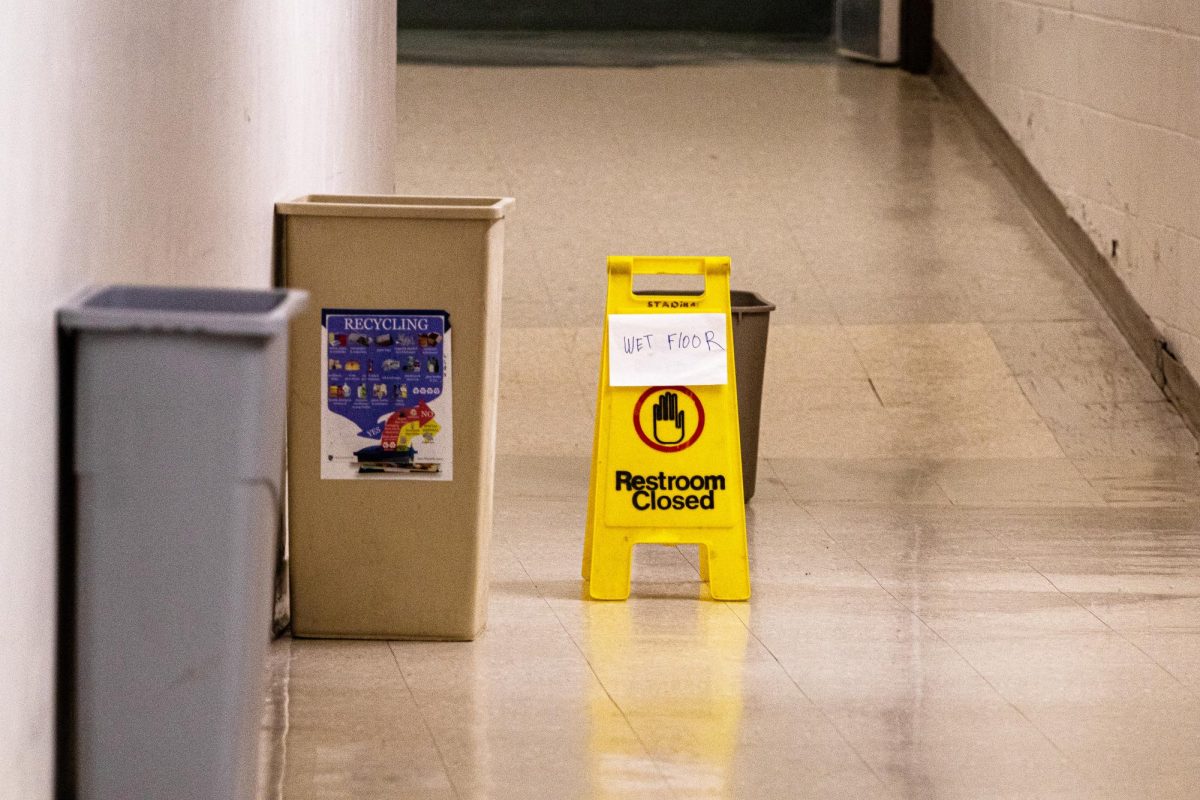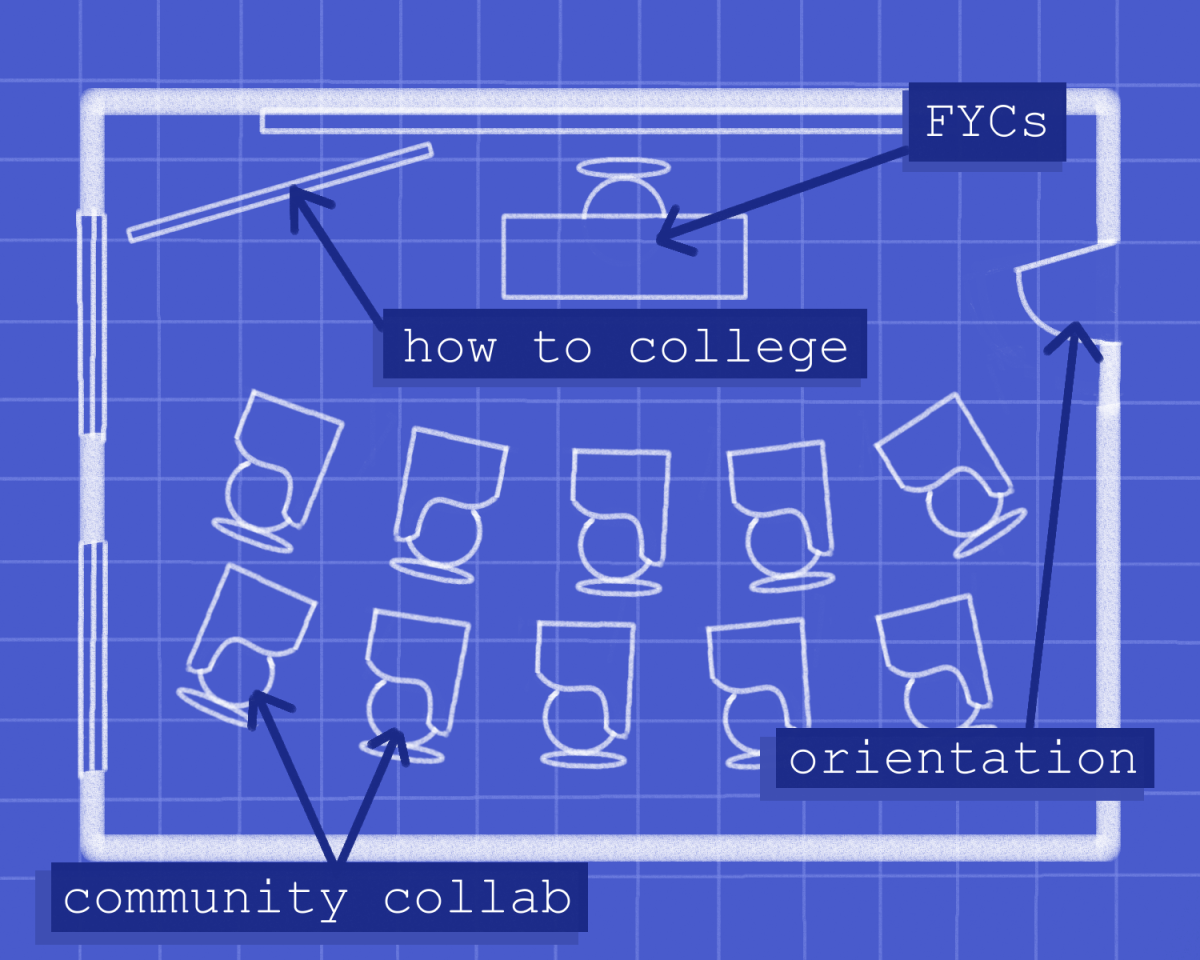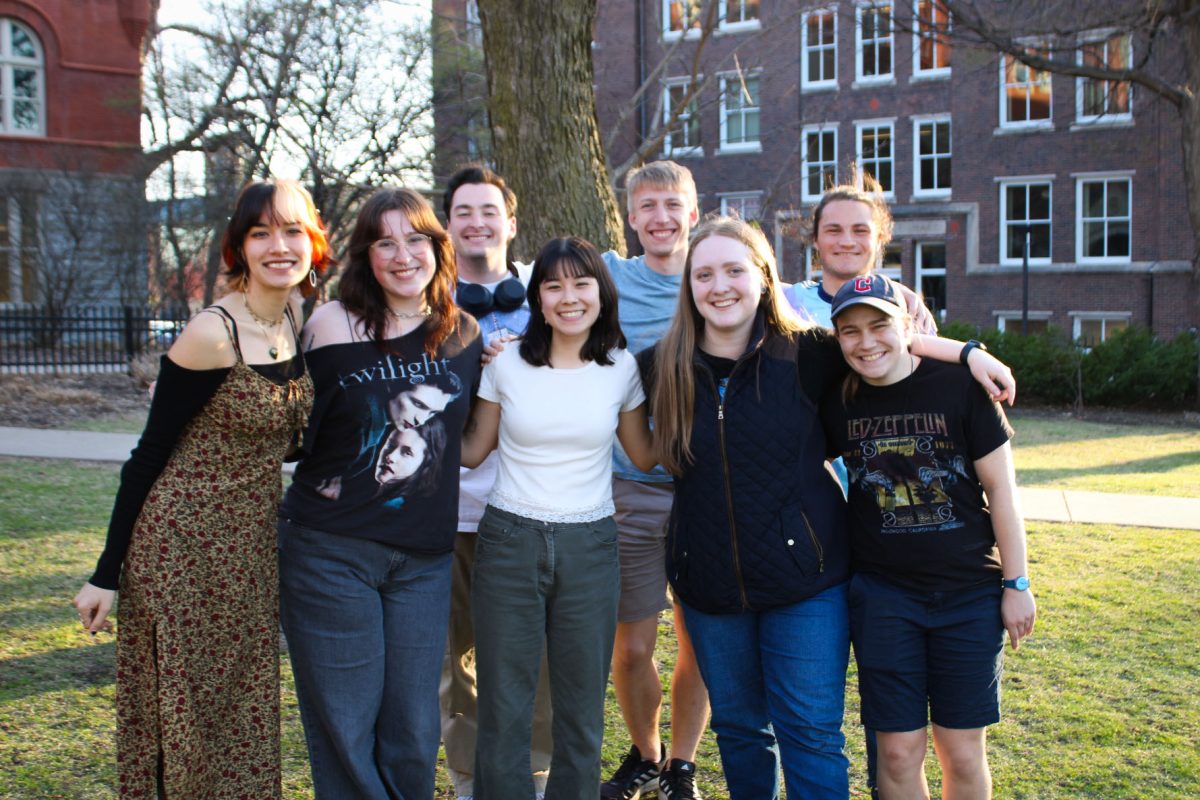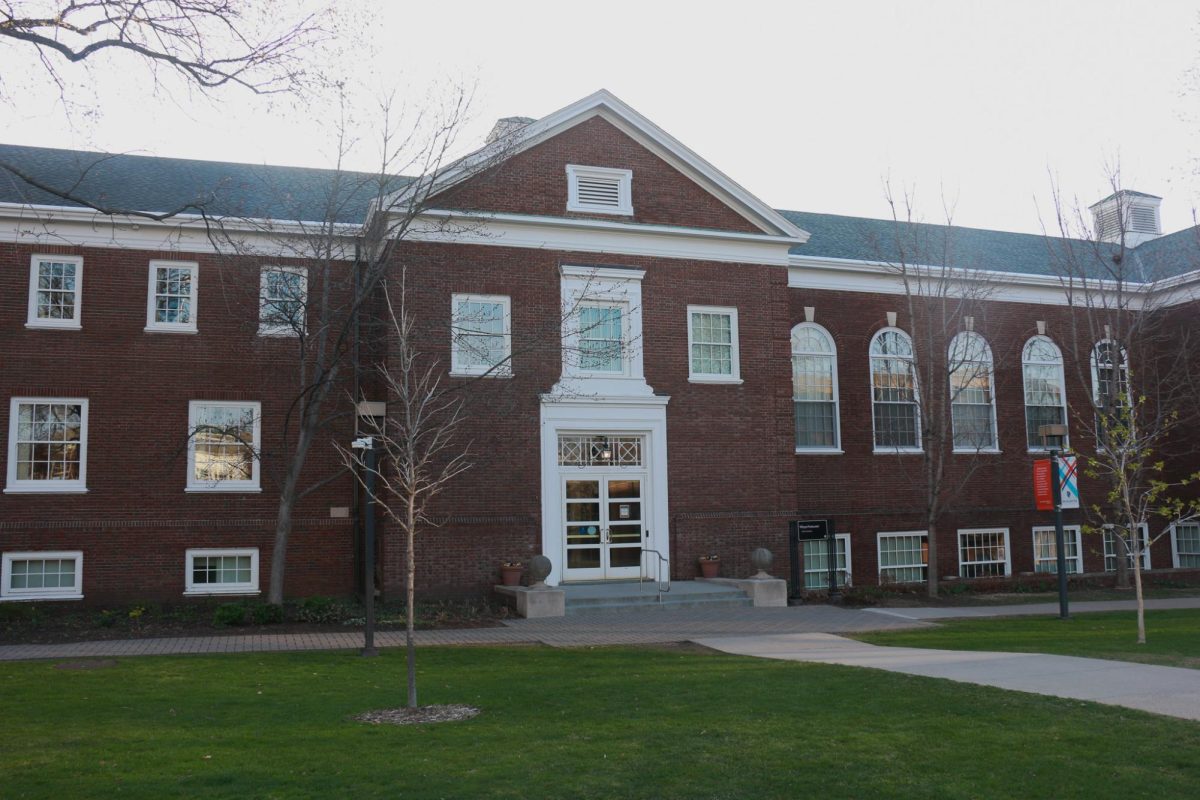This June, after attending graduate school at Ball State University, Marian Aden came to work at Macalester as the new Dupre Residence Hall Director. A Virginia native, she brings to campus not only a talent for keeping first years in line, but also a sophisticated assortment of sparkling hijabs, sleek black pants and colorful maxi dresses.

TMW: How would you describe your style?
Marian Aden: Sure, I guess this is a little weird for me, cause I don’t see myself as someone who has a distinct fashion sense. Recently, I began introducing color into my wardrobe. I used to wear a lot of black, I still do, but I’d wear very little color. That’s just what I felt comfortable in. Color was too much for me and I didn’t feel like making that kind of a statement. But ever since I started wearing my hijab again, like two years ago, I began to wear more color. Then I started coordinating my outfits with the different colored hijabs that I have.
Why did wearing a hijab become an incentive to coordinate your outfits?
There’s this misconception of women who wear the hijab. It’s kind of like, “Oh they’re oppressed, and they’re doing this because they have to.” So, I think one reason why I added color was to show that there’s personality and life to the women who wear hijabs. Because all you see on TV really are women dressed in all black and covered head-to-toe and you can’t tell them apart from anyone else.
How did you decide on the two outfits you selected for this article?
The purple outfit is my everyday outfit. That’s what I wear to work, and sometimes even on the weekends. I feel very comfortable in it.
My second outfit is more dressy. I wore this for a wedding. Again, there’s this misconception that Muslim women who wear hijabs can’t dress up and go to weddings and parties. So I picked this as an example of a modest outfit that could still be worn to a fancy event.
Would you say your decision to wear a hijab was influenced by your Somali cultural heritage as well as religion?
For me, this was more of a religious choice for myself. Growing up I wore one. After certain events I chose not to wear it, for safety reasons among others. But then, two years ago, I decided that this is really who I am, and this is what I’m choosing to do, and this is what’s expected of me, and this is how I want to show myself to the world.

Are there people who wear hijabs with more casual clothes like shorts or tank tops?
No, because really when you’re wearing a hijab it’s not just covering your hair. It’s making sure you’re presenting yourself in a modest way. So, your arms should be covered, and your legs should be covered. And you shouldn’t really, you know, show your chest or anything like that. So [after deciding to wear the hijab again] I basically had to purge my wardrobe.
Looking back, what do you think of your transition from your high school outfits to the way you dress now?
I actually feel a lot more comfortable now than I did pre-hijab. I don’t get as much attention, like when I walk down the street, as I did pre-hijab. That was really an issue for me. All through college, my first year of grad school, and most of high school, I didn’t wear my hijab. At that time I dressed like a typical American woman or teenager.
I do think people who see me associate me with their preconceptions of what it is to be a hijabi woman. However, when people talk to me they see me for who I am rather than for my physical self. So, when I meet people it’s not like “Oh she’s that girl with the big butt” or anything. They think of me as Marian. Although, I guess now people do say “the girl with the head wrap,” that’s what they call me now (laughs).







Gabrielle Kerr • Sep 11, 2019 at 1:23 pm
I loved as much as you will receive carried out right here. The sketch is attractive, your authored subject matter stylish. nonetheless, you command get bought an shakiness over that you wish be delivering the following. unwell unquestionably come further formerly again since exactly the same nearly very often inside case you shield this hike.
Peter Gray • Sep 10, 2019 at 7:47 am
Very nice write-up. I certainly appreciate this website. Keep writing!
Jane Poole • Sep 8, 2019 at 1:58 am
My developer is trying to convince me to move to .net from PHP. I have always disliked the idea because of the expenses. But he’s tryiong none the less. I’ve been using WordPress on a variety of websites for about a year and am concerned about switching to another platform. I have heard fantastic things about blogengine.net. Is there a way I can import all my wordpress posts into it? Any kind of help would be really appreciated!